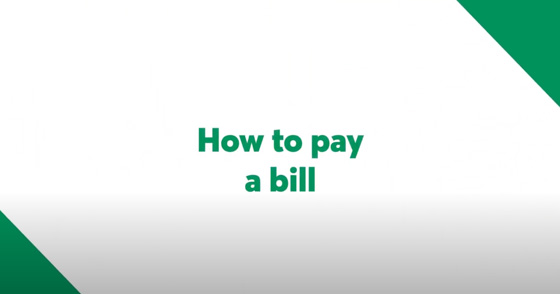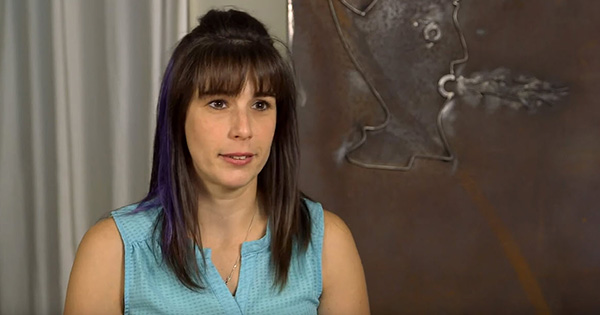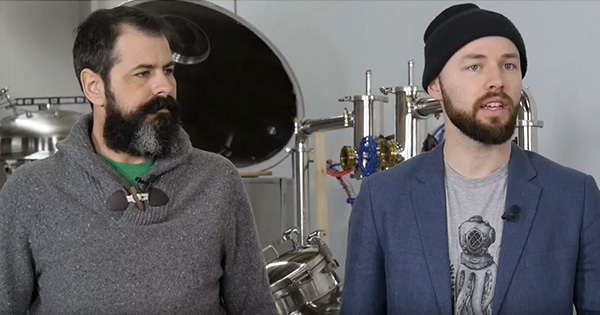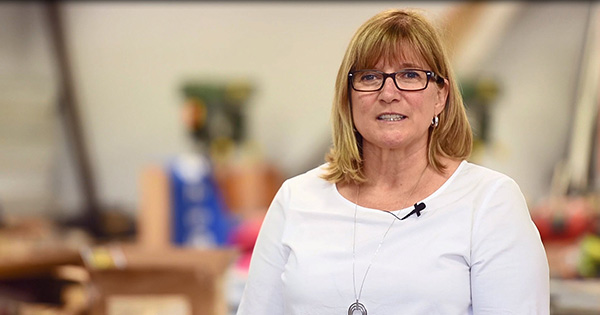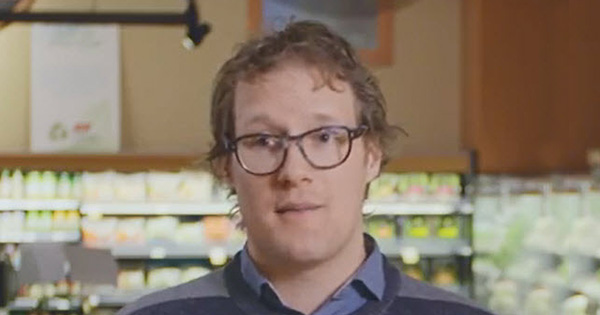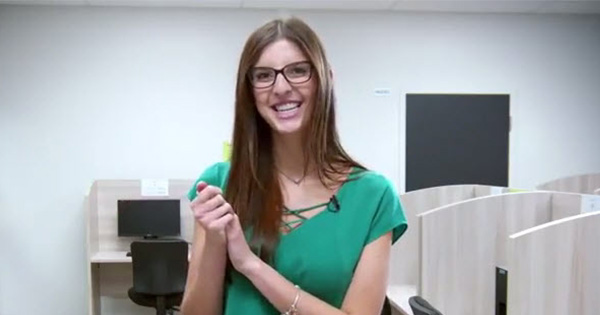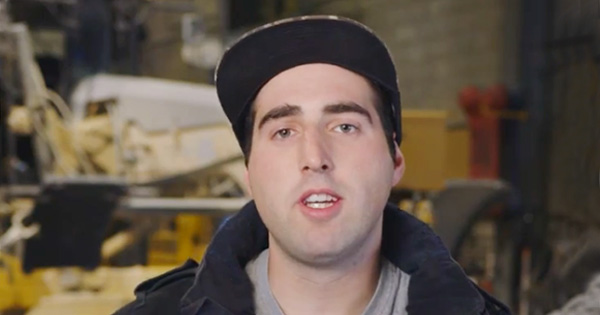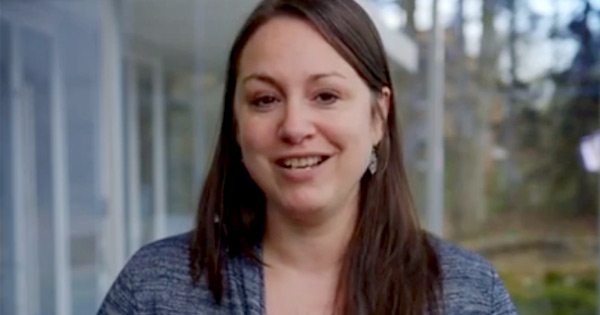Videos
Featured videos
Added on August 3, 2020
Guy Cormier (0 min 49 s)
At the 2016 Desjardins Group Annual General Meetings, Guy Cormier speaks about growing Desjardins while staying true to its values.
Added on November 7, 2019
Desjardins Mutual Assistance Fund (1 min 34 s)
Text transcript of video - Desjardins Mutual Assistance Fund
Added on November 23, 2018
See our 2 exhibits at the edifice Desjardins (0 min 46 s)
Text transcript of video - See our 2 exhibits at the edifice Desjardins
Added on November 23, 2018
Maison Alphonse-Desjardins - A history worth reliving (0 min 50 s)
Text transcript of video - Maison Alphonse-Desjardins - A history worth reliving
Added on November 20, 2018
Créavenir 2018 (2 min 08 s)
Added on October 24, 2018
Contributing to the academic success of young people (2 min 20 s)
Desjardins Foundation contributes to the academic success of young people through scholarships, prizes and partnerships with recognized organizations. The Foundation supports over 130,000 young people each year through its various programs.
Text transcript of video - Contributing to the academic success of young people
Added on August 8, 2018
Discover some inspiring entrepreneurs (1 min 11 s)
Text transcript of video - Discover some inspiring entrepreneurs
Added on April 6, 2017
Desjardins Group (2 min 21 s)
Added on March 23, 2017
Desjardins Group's financial results for 2016 (1 min 17 s)
Text transcript of video - Desjardins Group's financial results for 2016
Added on September 4, 2014
Video tour of Maison Alphonse-Desjardins (4 min 59 s)
Visit Maison Alphonse-Desjardins in Lévis, near Quebec City, where the founder of Desjardins Group created the first caisse populaire.
Text transcript of video - Video tour of Maison Alphonse-Desjardins
Added on December 18, 2012
Evolution of the stylized bee in a honeycomb cell (0 min 58 s)
Produced when the logo was adopted by Desjardins Group, the video describes the steps that led to the creation of the symbol
Text transcript of video - Evolution of the stylized bee in a honeycomb cell
Added on December 18, 2012
Monique F. Leroux (0 min 49 s)
At the 2011 Annual General Meetings of Desjardins Group, Monique F. Leroux speaks about respecting the mission and values through the needed changes Desjardins is undergoing.
Added on December 18, 2012
Alban D'Amours (0 min 41 s)
Alban D'Amours discusses the purposes of cooperation and cooperative method at the 2003 convention on "cooperative renewal".
Added on December 18, 2012
Claude Béland (0 min 45 s)
In his opening speech, Claude Béland explains why the 1991 convention under the theme "Ensemble pour une force d'action" was held.
Added on December 18, 2012
Raymond Blais (0 min 47 s)
Raymond Blais speaking about cooperative values at the 1985 Annual General Meeting of Desjardins Group.
Added on December 18, 2012
Alfred Rouleau (0 min 36 s)
Alfred Rouleau at a 1978 convention on the theme "Desjardins Group and the development of cooperation in contemporary Quebec".
Added on December 18, 2012
Émile Girardin (0 min 59 s)
Émile Girardin presenting school caisse objectives during a speech at the international convention of 1957.
Added on December 18, 2012
Cyrille Vaillancourt (0 min 55 s)
In an interview shortly before the international conference of 1957, Cyrille Vaillancourt explains why the convention was held and how he helped found the provincial Fédération.
Added on April 4, 2018
A leisurely break for families dealing with autism (1 min 41 s)
Text transcript of video - A leisurely break for families dealing with autism
Added on April 4, 2018
Growing healthy vegetables (1 min 38 s)
Added on April 4, 2018
Let's get active (1 min 00 s)
Added on October 5, 2017
The Emotion Game instructions (1 min 52 s)
Added on May 31, 2019
Desjardins supports Grand défi Pierre Lavoie (0 min 15 s)
Text transcript of video - Desjardins supports Grand défi Pierre Lavoie
Added on March 23, 2017
Desjardins Group's social responsibility highlights for 2016 (1 min 05 s)
Text transcript of video - Desjardins Group's social responsibility highlights for 2016
Added on February 28, 2012
The National Assembly passes a unanimous motion to promote cooperatives (2 min 39 s)
On February 21, 2012, at the National Assembly, Quebec government officials and social leaders reached out in a show of support for the cooperative business model. They joined forces to recognize and promote cooperatives and mutuals as powerful instruments for socio-economic growth in Quebec and across Canada.
Text transcript of video - The National Assembly passes a unanimous motion to promote cooperatives
Added on January 12, 2012
Pan-Canadian launch International Year of Cooperatives (4 min 13 s)
On January 12, 2012, at Lévis City Hall, cooperatives celebrated the official launch of the International Year of Cooperatives. Nearly 120 members and leaders of cooperatives attended the kick-off, held simultaneously in 14 cities across the country. In attendance for the launch were Steven Blaney, Member of Parliament for Lévis-Bellechasse and Minister of Veterans Affairs, Denis Richard, CQCM President, Alain Paquet, Member of the National Assembly for Laval-des-Rapides and Minister for Finance, Danièle Roy Marinelli, mayor of Lévis, and Monique F. Leroux, Chair of the Board, President and CEO of Desjardins Group.
Text transcript of video - Pan-Canadian launch International Year of Cooperatives
Added on March 2, 2022
Overview of available services (1 min 29 s)
The video clip presents some services offered to the community by the Centre d’entraide Contact de Warwick.
Added on March 2, 2022
Testimonial from volunteer Jacqueline Verville (1 min 37 s)
The video clip presents the testimony of Jacqueline Verville, a volunteer for the Centre d’entraide Contact de Warwick.
Text transcript of video - Testimonial from volunteer Jacqueline Verville
Added on March 2, 2022
Testimonial from a centre beneficiary, Valérie Lainesse (2 min 33 s)
The video clip presents the testimony of Valérie Lainesse, a Centre d’entraide Contact de Warwick beneficiary.
Text transcript of video - Testimonial from a centre beneficiary, Valérie Lainesse
Added on March 2, 2022
Testimonial from volunteer William Lainesse (2 min 16 s)
The video clip presents the testimony of a volunteer for the Centre d’entraide Contact de Warwick, William Lainesse.
Text transcript of video - Testimonial from volunteer William Lainesse
Added on March 2, 2022
Testimonials from volunteers Jacqueline Verville and Alain Perreault (2 min 07 s)
The video clip presents the testimonies of 2 volunteers at Centre d’entraide Contact de Warwick, Jacqueline Verville and Alain Perreault.
Text transcript of video - Testimonials from volunteers Jacqueline Verville and Alain Perreault
Added on October 27, 2021
Presentation of Caisse Desjardins Hydro (3 min 02 s)
Text transcript of video - Presentation of Caisse Desjardins Hydro
Added on June 2, 2023
Chantal – Work/Life balance (0 min 39 s)
Added on June 1, 2023
Liane – Employee well-being (1 min 01 s)
Added on June 1, 2023
Isaac – New employee (0 min 52 s)
Added on June 1, 2023
Jean-Nicolas – Manager (0 min 51 s)
Added on June 1, 2023
Maria – Student & part-time employee (0 min 54 s)
Text transcript of video - Maria – Student & part-time employee
Added on February 22, 2023
The young people who use Répit talk about their hopes for the future (2 min 04 s)
The last video brings together the young people seen in the previous videos as they share their outlooks and reflections.
Text transcript of video - The young people who use Répit talk about their hopes for the future
Added on February 16, 2023
Introducing Centre Répit, a community organization in Victoriaville (2 min 01 s)
The video introduces Répit's services through the descriptions provided by 3 young people who visit the centre.
Text transcript of video - Introducing Centre Répit, a community organization in Victoriaville
Added on February 16, 2023
The role of the day centre (2 min 38 s)
Anne-Marie, Dave and Caroline talk about the café, the day centre, and its social workers, as well as the birth of strong friendships.
Added on February 16, 2023
Learn more about the important work of Répit's street workers (2 min 35 s)
This video introduces the street workers, focusing on the importance of their presence and intervention.
Text transcript of video - Learn more about the important work of Répit's street workers
Added on February 16, 2023
Presenting the centre's D'École de la rue program (2 min 21 s)
Dave talks about the D'École de la rue service and its importance to young people who want to "drop back in."
Text transcript of video - Presenting the centre's D'École de la rue program
Added on February 16, 2023
The importance of case workers for young people (1 min 19 s)
Anne-Marie speaks about her first contact with Répit, while Caroline describes how valuable it is to have the case workers there.
Text transcript of video - The importance of case workers for young people
Added on February 25, 2022
IntroducingCentre d’entraide Contact de Warwick and one of its volunteers, Jacqueline Verville (1 min 25 s)
The video clip presents the Centre d’entraide Contact de Warwick and one of their volunteers, Jacqueline Verville. All voices are offscreen. Background music plays throughout the video.
Added on July 1, 2015
Angela Iermieri, Financial Planner (0 min 54 s)
Angela Iermieri, Financial Planner, talks about Quebecers' financial planning habits and the importance of having a written financial plan.
Text transcript of video - Angela Iermieri, Financial Planner
Added on July 1, 2015
Jean-René Ouellet, Senior Analyst (0 min 50 s)
Jean-René Ouellet, Senior Analyst, Portfolio Advisory Group, presents his approach to analyze market trends that goes beyond macroeconomic statistics through field meetings.
Text transcript of video - Jean-René Ouellet, Senior Analyst
Added on July 1, 2015
Nicolas Richard, Chief investment strategist (1 min 09 s)
Nicolas Richard, Chief investment strategist, presents strategies and tools to personalize portfolio management.
Text transcript of video - Nicolas Richard, Chief investment strategist
Added on July 1, 2015
Rosalie Vendette, Senior Advisor (0 min 42 s)
Rosalie Vendette, Senior Advisor, Responsible Investment, explains why some companies operating in controversial industries can be included in responsible investment portfolios.
Added on November 27, 2014
A financial plan to enjoy financial freedom (1 min 26 s)
Quebecers are planning enthusiasts. Property purchase, renovations, wedding, retirement, the majority say they would plan to achieve their goals. However, 64% of survey respondents do not have a financial plan. And only 18% have a written plan to help them reach the great goals and objectives of their financial life. "Yet, they are the ones better equipped," explains Marc Dubuc from Desjardins Wealth Management, "94% of those with a written financial plan enjoy more freedom to carry out the projects close to their hearts."
Text transcript of video - A financial plan to enjoy financial freedom
Added on July 9, 2014
Desjardins VRSP (3 min 19 s)
The Government of Quebec has decided to take action by introducing new Voluntary Retirement Savings Plans (VRSPs). VRSP’s will make it easier for employees at small and medium businesses to save for retirement. Easy, accessible and integrated, the Desjardins VRSP offers online and mobile solutions to meet the needs of employers and their employees. Specialists from Desjardins will guide them through the process and provide the tools they need to comply with the VRSP legislation.
Added on October 12, 2021
Where does money come from? (2 min 06 s)
The flow of money is a cycle in which everyone plays a role.
Added on December 12, 2017
Desjardins Lab (1 min 55 s)
Step into the heart of Desjardins Lab, Desjardins Group's innovation lab.
Added on August 19, 2013
What is a cooperative? (1 min 45 s)
What is cooperation? It's working as a team and joining forces to accomplish more.
Added on November 26, 2018
TeenZones: Supporting young people (1 min 32 s)
Text transcript of video - TeenZones: Supporting young people
Added on November 26, 2018
TeenZones: Supporting young people (1 min 28 s)
Text transcript of video - TeenZones: Supporting young people
Added on November 26, 2018
TeenZones and their facilitators (1 min 19 s)
Added on November 15, 2018
We're all committed to supporting youth - Forces AVENIR (0 min 30 s)
Text transcript of video - We're all committed to supporting youth - Forces AVENIR
Added on November 13, 2018
Eva participates in a project supported by Desjardins Foundation (0 min 30 s)
Text transcript of video - Eva participates in a project supported by Desjardins Foundation
Added on November 13, 2018
Frédérique, athlete and Quebec Games participant (0 min 30 s)
Text transcript of video - Frédérique, athlete and Quebec Games participant
Added on November 8, 2018
CFER Deux-Montagnes (0 min 30 s)
Added on March 29, 2018
Fostering the growth of innovative businesses in Magog (1 min 15 s)
Magog Technopole's mission is to foster the growth of the area's Information and Communication Technologies (ICT) sector and green technologies in the city of Magog by developing a unique and receptive environment and by promoting that environment to companies with a view to encouraging them to set up business.
Text transcript of video - Fostering the growth of innovative businesses in Magog
Added on March 29, 2018
Investing in regional pride of the Eastern Townships region (1 min 20 s)
Créateurs de saveurs Cantons-de-l'est is an identification mark for products from the Eastern Townships region. They help local companies with the promotional work and to sell their products to grocers, restaurants, food tourism and public markets.
Text transcript of video - Investing in regional pride of the Eastern Townships region
Added on January 8, 2018
The Desjardins difference at Cégep de Trois-Rivières (1 min 44 s)
Text transcript of video - The Desjardins difference at Cégep de Trois-Rivières
Added on December 15, 2017
Supporting sports in Valleyfield (1 min 06 s)
Added on December 4, 2017
Supporting a distinguished festival in Rouyn-Noranda (1 min 08 s)
For 36 years, the Festival du Cinéma International has drawn big names from everywhere to Rouyn-Noranda. Supporting a festival that makes a difference in the regions. That's the Desjardins difference.
Text transcript of video - Supporting a distinguished festival in Rouyn-Noranda
Added on December 4, 2017
Supporting local businesses in Chibougamau (1 min 13 s)
Entreprises Alain Maltais is a family business that offers quality services to forestry and mining companies in Northern Quebec.
Text transcript of video - Supporting local businesses in Chibougamau
Added on October 31, 2017
An indoor playground for kids in Saint-Michel (2 min 04 s)
Since 2015, the indoor playground in Saint-Michel has been providing families in the neighbourhood with a much-needed space for kids to play and stay active through the winter months. For many families in the neighbourhood, it’s their first winter in Quebec, so the indoor playground provides a safe, fun space where kids and parents alike can socialize and connect with others in the community.
Text transcript of video - An indoor playground for kids in Saint-Michel
Added on October 20, 2017
Innovative technology in St-Hyacinthe (1 min 06 s)
Québec Induction's ambition is to revolutionize the world of cooking by commercialising an induction hob placed directly in the kitchen cabinet, flush with the countertop. Desjardins's CRÉAVENIR program offered them a helping hand throughout the startup phase and provided financing that fits their needs and financial capabilities.
Text transcript of video - Innovative technology in St-Hyacinthe
Added on October 17, 2017
Supporting Auberges du Cœur across Quebec (1 min 12 s)
Text transcript of video - Supporting Auberges du Cœur across Quebec
Added on October 2, 2017
Giving a helping hand to Patro community centres (1 min 12 s)
Text transcript of video - Giving a helping hand to Patro community centres
Added on October 2, 2017
A university campus in Drummondville (0 min 55 s)
The Desjardins difference is also providing bikes to young people at Centre communautaire Bon Courage so they can take part in the Cyclodéfi cycling event in Lac Saint-Jean!
Text transcript of video - A university campus in Drummondville
Added on September 19, 2017
Scholarships for Magdalen Islanders (0 min 50 s)
Every year, dozens of young people from the Magdalen Islands receive bursaries to study off-island.
Text transcript of video - Scholarships for Magdalen Islanders
Added on May 19, 2017
A university campus in Drummondville (1 min 22 s)
The new UQTR campus in Drummondville gives local youth access to university training programs close to home.
Text transcript of video - A university campus in Drummondville
Added on February 23, 2017
5 scholarship winners from Caisse Desjardins de Saint-Jérôme (in French only) (3 min 13 s)
Added on December 22, 2016
Desjardins Foundation scholarship recipients (in French only) (0 min 55 s)
Text transcript of video - Desjardins Foundation scholarship recipients (in French only)
Added on December 8, 2016
My school, my family (2 min 40 s)
The food co-op Aux goûts du monde helps newcomers in Drummondville integrate by providing the local community with access to diverse food products that are specific to their culture. Aux goûts du monde offers cooking classes, and is a grocery store and restaurant rolled into one. But more importantly, it's a place for cultural exchange and integration, made possible thanks to the support from Caisse de Drummondville and itsmembers.
Added on November 1, 2016
Hockey and economic spinoffs in Victoriaville (1 min 22 s)
Text transcript of video - Hockey and economic spinoffs in Victoriaville
Added on November 1, 2016
Making a business dream a reality (1 min 42 s)
In Quebec, business transfers to the next generation of farmers is very real issue. Ann-Marie Jobin and her partner, Jean-Philip Leblanc, are part of a third of Quebec business owners who've opted for this option. Thanks to the CRÉAVENIR program, they became co-owners of the Bergerie Joblanc sheep farm. Located in Sainte-Sophie-de-Lévrard in Centre-du-Québec, their business specializes in the sale of reproductive ewes and processed lamb products.
Text transcript of video - Making a business dream a reality
Added on November 1, 2016
Supporting family businesses (1 min 39 s)
Added on October 13, 2016
Together, we facilitate cultural integration (2 min 31 s)
The food co-op Aux goûts du monde helps newcomers in Drummondville integrate by providing the local community with access to diverse food products that are specific to their culture. Aux goûts du monde offers cooking classes, and it is a grocery store and restaurant rolled into one. But more importantly, it is a place for cultural exchange and integration, made possible thanks to the support from Caisse de Drummondville and its members.
Text transcript of video - Together, we facilitate cultural integration
Added on October 13, 2016
Together, we reach out to street kids (2 min 36 s)
Association pour les jeunes de la rue de Joliette reaches out to young people in the city in difficult situations and builds a relationship of trust with them. Each year, the association helps several hundreds of young people, with support from Caisse de Joliette and its members.
Text transcript of video - Together, we reach out to street kids
Added on October 13, 2016
Together, we give young people the tools they need to succeed (1 min 41 s)
The food co-op Aux goûts du monde helps newcomers in Drummondville integrate by providing the local community with access to diverse food products that are specific to their culture. Aux goûts du monde offers cooking classes, and is a grocery store and restaurant rolled into one. But more importantly, it's a place for cultural exchange and integration, made possible thanks to the support from Caisse de Drummondville and itsmembers.
Text transcript of video - Together, we give young people the tools they need to succeed
Added on May 18, 2016
Together, we're helping homeless women (1 min 57 s)
Herstreet provides shelter to troubled and homeless women. With Desjardins's support over the past 10 years, the organization has been able to pursue its mission to help women start over.
Text transcript of video - Together, we're helping homeless women
Added on March 9, 2016
Together, we create new adapted jobs in Sorel-Tracy (2 min 19 s)
The restaurant Les Saveurs du Marché allows young workers experiencing various problems to reintegrate the labor market. Through a partnership with la Colonie des Grèves de Contrecoeur, which helped the Caisse Desjardins Pierre-De Saurel, the restaurant has doubled its activities and number of employees.
Text transcript of video - Together, we create new adapted jobs in Sorel-Tracy
Added on March 9, 2016
The Francofolies: humming for 3 good causes (4 min 34 s)
After the 2015 Francofolies de Montréal festivities, 3 Desjardins members gave donations to the cause of their choice : Fondation du Dr Julien - External link. This link will open in a new window., Opération Enfant Soleil - External link. This link will open in a new window. and Fondation Sainte-Justine - External link. This link will open in a new window..
Text transcript of video - The Francofolies: humming for 3 good causes
Added on March 9, 2016
Generous festival-goers in Quebec City (4 min 12 s)
After the 2015 Festival d'été de Québec festivities, 3 Desjardins members gave donations to the cause of their choice: Jeunes musiciens du monde - External link. This link will open in a new window., Coopérative de solidarité SABSA - External link. This link will open in a new window. and Society of Saint Vincent de Paul de Québec - External link. This link will open in a new window. for the Sainte-Foy area.
Text transcript of video - Generous festival-goers in Quebec City
Added on December 26, 2015
Together, we support those battling illness (2 min 16 s)
Text transcript of video - Together, we support those battling illness
Added on December 26, 2015
Together, we fight against the solitude of the elderly (2 min 44 s)
Text transcript of video - Together, we fight against the solitude of the elderly
Added on December 26, 2015
Together, we help disadvantaged youth regain their confidence (2 min 21 s)
Text transcript of video - Together, we help disadvantaged youth regain their confidence
Added on December 26, 2015
Together, we take care of the new generation in Maskinongé (2 min 14 s)
Text transcript of video - Together, we take care of the new generation in Maskinongé
Added on September 22, 2015
Together, we help the Gaspé people to work where they live (2 min 03 s)
André Preston, Director of the Desjardins Group Student Advisory Centre, Dave Dupuis, an employee, and Dave's wife Vanessa Gagnon, talk about how the centre brought new energy to the region and to their lives.
Text transcript of video - Together, we help the Gaspé people to work where they live
Added on September 22, 2015
Together, we give a helping hand to new arrivals (2 min 14 s)
Justiniano Vasquez, originally from Venezuela and a Quebec resident for 12 years, started his own cleaning and disinfection business to make a technical and social contribution to Quebec society.
Text transcript of video - Together, we give a helping hand to new arrivals
Added on September 22, 2015
Together, we unite the people of Baie-Saint-Paul (2 min 09 s)
Clément Turgeon, General Manager and Artistic Director of Le Festif! de Baie-Saint-Paul, describes how Desjardins helped launch the festival, which was originally created to fight against the rural exodus of the younger generation.
Text transcript of video - Together, we unite the people of Baie-Saint-Paul
Added on September 22, 2015
Together, we provide a safe environment for those who need it most (2 min 10 s)
France Desjardins, Director of La Maison du Père, explains how the in-house cheque cashing service provided by the Caisse du Quartier-Latin de Montréal works to help social reintegration.
Text transcript of video - Together, we provide a safe environment for those who need it most



